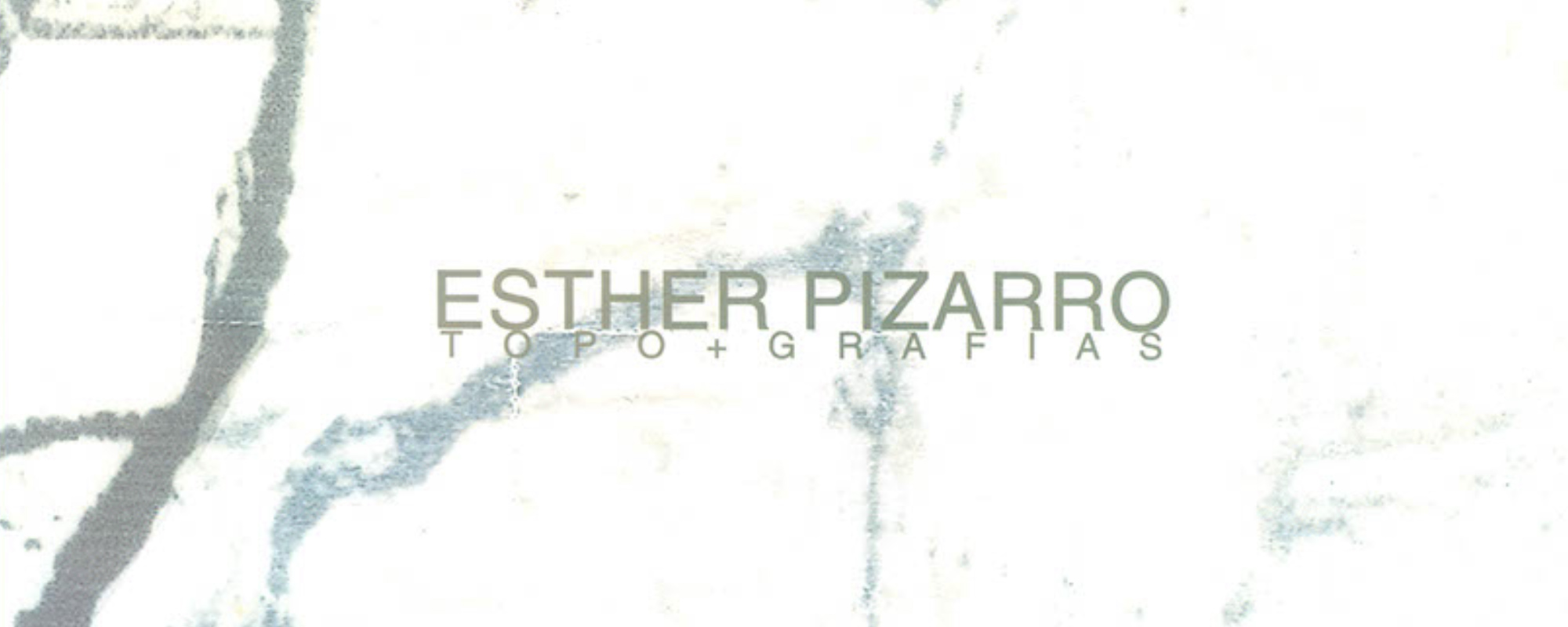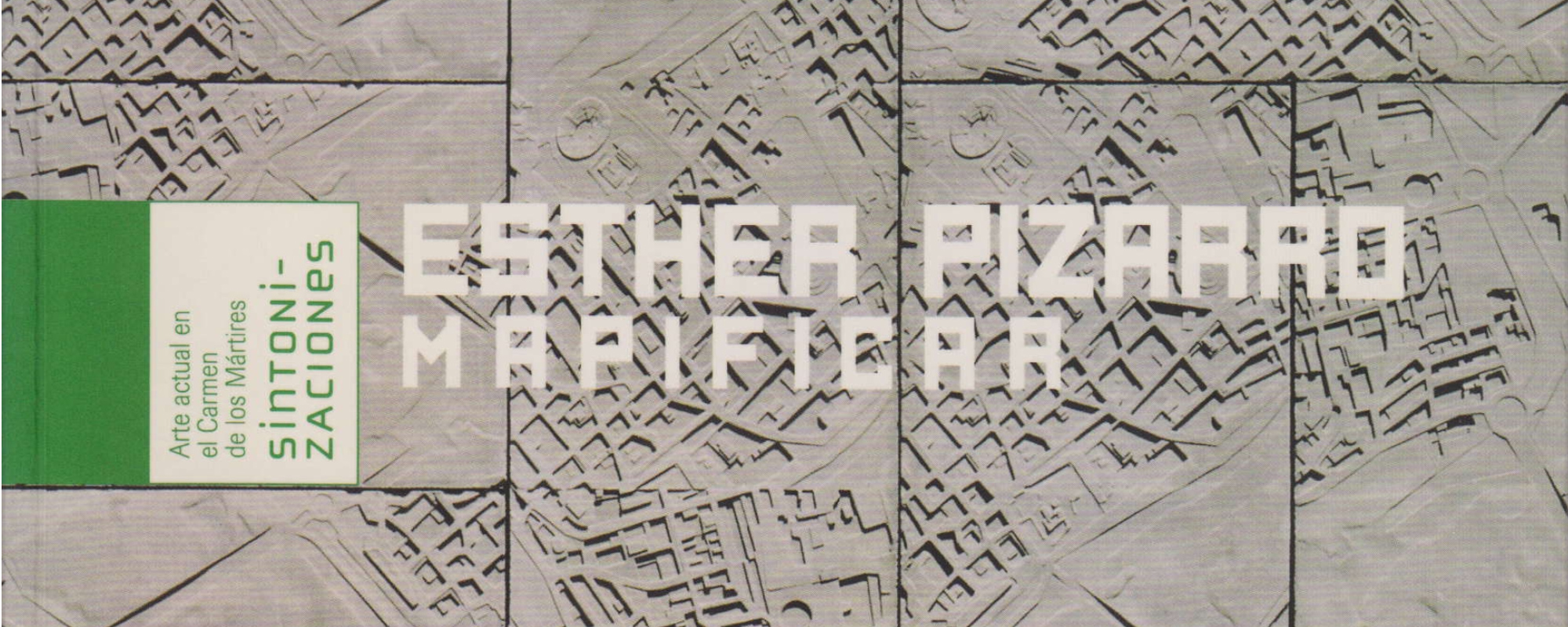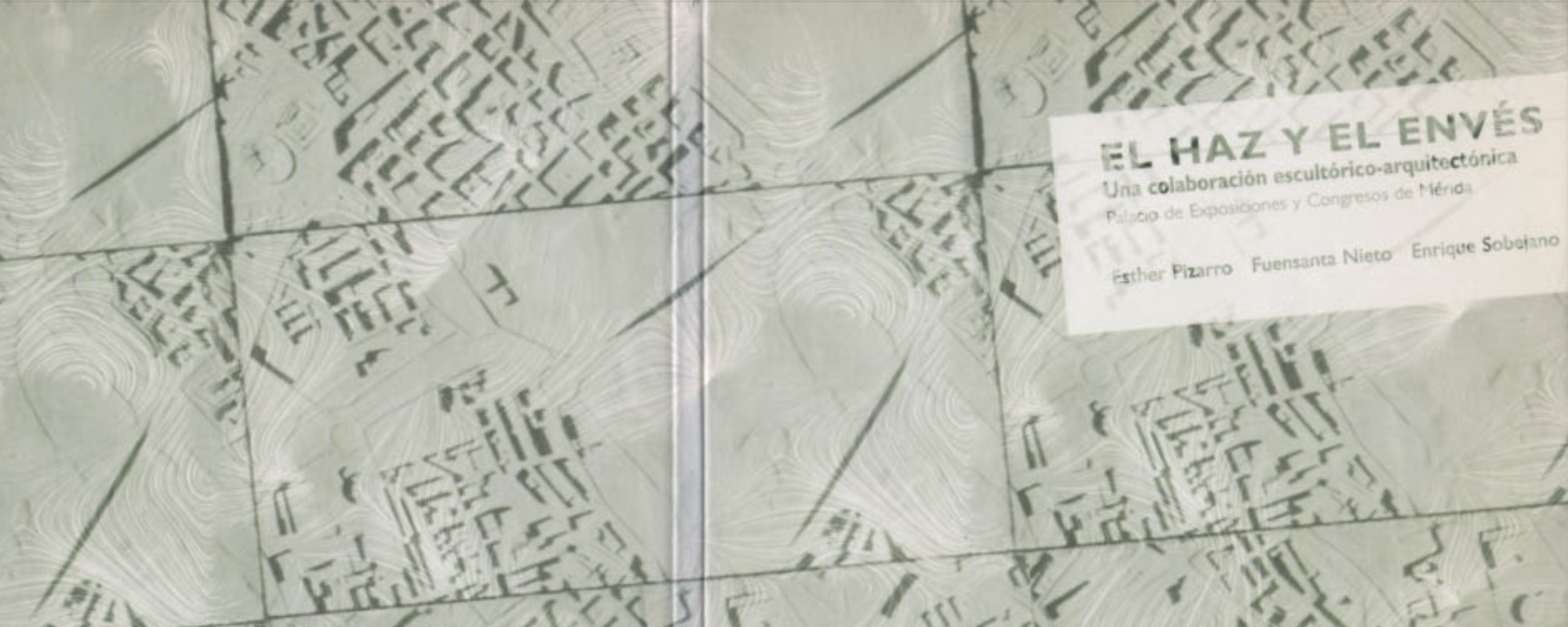MARTÍN GALÁN, Fernando (2002) :: Exhibition catalog text: Topo+grafías

MARTÍN GALÁN, Fernando (2002). “Contributions of Memory”. Exhibition catalog text: Topo+grafías, Galería Raquel Ponce, Madrid
1.The transformed order
The twenty districts (“arrondissements”) of Paris facing downward. The unusual point of view: from the interior to the surface. The world inside out. Esther Pizarro has literally put the city of the Seine upside down: “Topografía urbana de París” (Urban topography of Paris), constitutes a main piece of the series “Topo + grafías” (Topo + graphies) which is a work of contrasts, paradoxes and transgressions. “Downstairs” is an expression traditionally used to refer to the humble people belonging to the domestic service of a rich house, provided that they usually live in the ground-floor. On the contrary, in Paris the low classes used to live in the top floors of the houses, in the garrets, what in Spain were known as “upstairs” and in French “chambers des bonnes” and “garçonniéres”… just until rather recently the Parisian habits were inverted (likewise the artist has reversed the scale model of Paris) and they became the esteemed refuges of unfaithful husbands and of licentious bachelors, who set up there their secret dens, and the desired target of modern and wealthy city-dwellers who searched for rooms with views, light and a little bit of sun.
Perhaps as in Europe, we have recently gone through a long period of dead calm to some extent concerning the sociopolitical anxieties (probably caused by the European Union, the fall of the Eastern/Western blocs, the State of Welfare …), to talk about “subversion” in terms of art has become fashionable as a reaction to that intellectual lethargy. Besides all the reticence it creates in me to talk about such a rather trite term, I would say that Esther Pizarro carries out in her new work a subversion of the physical and conceptual reality of the urban habitat, as in the impossible architectures of Maurits Escher.
It is a game of complex and linked postures and questionings. A turn to the binomials empty/full, negative/positive, façade/reality, reality/fantasy… So what it’s the result? Downstairs or upstairs?, when moreover, in the perspective shown of the symbolic buildings facing downward and showing their innermost parts, the stairs rise from top to bottom, from the garrets to the basement: Is it a descent to hell looking as a ascent to heaven? The stairs simply keep their “usual” arrangement within urban containers set inside out. As if it was a struggle of the citizens to maintain logical and appropriate structures of dwelling in the middle of the absurdity of the current urban development.
2.The (unavoidable?) quotations
Esther Pizarro, Doctor in Sculpture by the Universidad Complutense of Madrid, holder of the Fulbright scholarship in Los Angeles, of the scholarship of the Academia de España (Academy of Spain) in Rome and of the scholarship of the Colegio de España (College of Spain) in Paris, has extended her scope of sculpture throughout the fields of urban development and of art in nature, from the subway stations in Madrid to the Dominican valleys in San José de Ocoa, thus exploring the inner and outer appearances of the environment. Introspection and expansion.
But her work stresses the urban matters. After her stay in such different cities like Los Angeles, Rome and Paris, her work reflects her own vital experiences gathered there:
“As a result of these experiences, the set of works created in each city forms the travel diary reflecting the accumulation of memories and experiences encountered in each place”.[1]
The lines of escape of her interpretation of Los Angeles went upward, as the own arrogant appearance of the city. The lines of Rome, went downward, looking for its historic layers and for its identifying marks buried or at ground level. Her interpretation of Paris reflects the medium term, as a city which may represent a certain synthesis of the previous trends: the medium heights; the roofs looking downward and the foundations looking upward, lines of escape crossed; the aerial views on the floor, which require the humble gesture of crouching in order to be able to view them; and the non-views (the hidden) shown to the perception of the spectator through an stimulating transgression of the physical, social and chaste rules; the inwardness and the secrets sheltered in the houses (in this case the stairs only) shown to the indiscreet looks, which are connected to the voyeuristic attitudes impregnating our current society.
Her work “Topografía urbana de París” (Urban topography of Paris) is composed of a modular installation: the twenty “módulos-arrondisements”(modules-districts) arranged along the curves of the Seine, which paradoxically constitutes the course through which the spectator may physically get in the set, where the subjective scale plays an important role. As Barbara Hepworth stated in due time:
“One of the most profound qualities of sculpture is scale - it can only be perceived intuitively because it is entirely a quality of thought and vision. (…) Scale is not physical size; because a very small thing can have good scale or a very large thing poor scale (…). Size can be emphasized by the juxtaposition of the very large to the very small; but this is only one side of sculptural relationships. There is the sculpture which has magnificent scale because of its precise and exact relationship between dimension and idea (…). There are two main sculptural identities - one which comes within the embrace of our hands and arms, and the other which stands free and unrelated to our sense of touch. Both have their distinct and individual quality of scale which makes an expansion and spaciousness in everything surrounding them. Scale is connected with our whole life - perhaps is even our whole intuitive capacity to feel life ”.[2]
But the series “Topo + grafías” includes other works upon Paris, a city that, like the French thinking and gardens, bases its structure on rationalism. This great large city has developed its enormous perspectives designed with mathematical and geometric accuracy, especially from Haussmann’s large urban projects. It is here where the planning gets a special prominence and for this reason Pizarro insists on what she calls “topografía construída” (constructed topography). The twenty Parisian districts have a second interpretation in like number books of the artist which for the author constitute “la biblioteca del lugar a la memoria” (the library from place to memory):
“... twenty books of the artist, each book belongs to an ‘arrondissement’ ,thus constituting the diary or the history of each district, of its peoples, of its streets and of the way of how I’ve perceived that specific area of Paris.” [3]
The books take the street directory of the city fragmented into portions as a material and conceptual base, and each of the portions representing a neighborhood, which Pizarro places in a showcase with glass doors in harmony with her idea of urn safeguarding the contributions from her personal memory.
The artist seems to tell us that the city is not only built with architecture, but it is also being composed of the lives it shelters, of the collective memory (which is more than the summary of personal memories she talks to us about): the process of development in a city is a physical and metaphysical matter. The constructionism of Esther Pizarro is plastic and conceptual and it seems like she tries to claim with it the adaptation of the city to the integral development of the human being, against the alienation generated by many current urban typologies. Guy Debord, theorist of the International Situationism, in 1957 defended the same idea with these words:
“Our central idea is that of the construction of situations (…) We must develop a methodical intervention based on the complex factors of two components in perpetual interaction: the material environment of life and the comportments which it gives rise to and which radically transform it”.
Our perspectives of action on the environment ultimately lead us to the notion of unitary urbanism. Unitary urbanism is defined first of all by the use of the ensemble of arts and techniques as means of contributing to an integral composition of the milieu. This ensemble must be envisaged as infinitely more far-reaching than the old domination of architecture over the traditional arts, or than the present sporadic application to anarchic urbanism of specialized technology or of scientific investigations such as ecology. (…) It must include the creation of new forms and the detournement of previous forms of architecture, urbanism, poetry and cinema. Integral art (…) can only be realized at the level of urbanism”. [4]
Pizarro’s preoccupation for the influence (sometimes determinant) of the environment and the means is a constant in her work:
“The concept of ‘mould’ of the city … The living space shapes our lives ... We go along the streets, the empty spaces of the city: we do not go around the full ones, the constructed ones…The buildings become receptacles of lives…How we move around the city: our body constitute another receptacle…” [5]
The Guidelines of the November Group (“Novembergrupee”), a German group of artists created as a result of the November Revolution, also already referred to these matters in 1919:
“IV We demand a voice and an active role in:
I. All architectural projects as a matter of public concern: city planning, new settlements, the public buildings of government, industry and the social services, private building projects, the preservation of monuments, the suppression of artistically worthless architectural monuments. ” [6]
Walter Gropius, besides being the founder and director of the Bauhaus, was the president of the Council of the Workers for Art (“Arbeitsrat für Kunst”), an artist organization which, like the Novembergrupee was created in Germany after the November Revolution. In 1919 the “Arbeitsrat” distributed a questionnaire (being Gropius its president) including questions about, among other things, the public housing as one of the best means of modern art to “harmonize” with the citizens. Gropius among his answers wrote:
“The mentality of our nation has already been profoundly shaken by the recent disaster and after the total collapse of the old life it has been made so sensitive that it might make Germany more receptive to the new spirit than any of the other European nations. For war, hunger, and pestilence have jarred us out of our obstinacy, they have aroused us out of our inertia and self-satisfaction. (…) Through pain we have been taught once again to feel. Feeling is, after all, the source of inspiration, feeling leads to finding, to that creative power which organizes and structures, in short –on the broadest sense – to a passion for building. And this passion for building, for structure – this architectural spirit- is the natural antithesis to the world of shopkeepers, to the spirit of disintegration and destruction which is the deadly enemy of all art ”. [7]
3.Staircase of a History
The staircase constitutes a universal and omnipresent symbol. The concept of staircase impregnates life in every order, from the nervous system of the primitive and elemental scolopendrid, “arranged in stairs”, to the step each of us occupy within the scale of all our vital aspects (work, social “inter amicos”…).
For example, the invention of the wheel is dated with certain historic closeness. However, the one of the staircase seems to get lost in the origins of Humanity in itself. In the sides of the path to the mountain of Tai Shan (China) there are enormous and enigmatic granite steps which nobody has dared to date until now. The staircases played an important role in the architecture of Mesopotamia, Knossos, Persepolis and Classic Greece. During the Middle Ages nearly all of them oddly fell back (like many other things) on spiral shape and it was from the Renaissance when they gained a renewed importance as a dramatization of power and solemnity.
Mallarmé, one of the main symbolist poets, is the author of a semi-dramatic story which seems to be a premonitory symbol of Pizarro’s work, “Igitur o la locura de El-benohn” (Igitur or the madness of El-benohn) (1870), also with a modular structure divided in four parts: “La medianoche”(“Midnight”), “La escalera” (“The staircase”), “La tirada de dados” (“The cast of dices”) and “El sueño sobre cenizas” (“The dream about ashes”). The Parisian neighborhoods seem to have been caught and shaken on midnight, while the city sleeps, by the hands of a speculator Cyclops and to have been scattered on the ground like dices left in a random position. On the other hand, the staircases remained in its positive position, as an everlasting symbol of human logic and of its function of overcoming obstacles and ascend …, as a dream built on the ashes of chaos.
Esther Pizarro’s buildings harshly lack any sign of human habitation. The “characters” of the bloc are just the means of passage of their tenants, the staircases, which have repercussions, of the work of Jardiel Poncela “Los habitantes de la casa deshabitada” (“The inhabitants of the vacant house” (1942). In “Historia de una escalera” (“Story of a staircase”) (1949), of Buero Vallejo, the tenants are the main characters, in contradiction with the title, and the staircase is taken as the link of the specific stories. On this play was shown for the first time in the Spanish postwar period, the anguish, the poorness and the incapacity to carry out the human dreams due to the environment and to the circumstances as to the personal incapacity, all of it represented by the symbol the staircase of a resident’s association constitutes.
An interesting issue arises at the sight of Pizarro’s work: Are we before another symbol of anguish and frustration (staircase of escape) or before a positive element facilitating life (a staircase which overcomes obstacles and reaches de top)? The wax layer covering its stairs, like the rest of her works interior, resolves the dilemma as the own artist explains:
“A wax skin for the inside of my containers, like a city holding in itself to become more intimate, more human and accessible. (…) The wax apparently soft and fragile and at the same time warm, delineates the innards of the city, that city imagined in our memory as delicate, weak and which needs to be protected by an external rigid and full lead carcass”.[8]
[1] Pizarro, Esther: “Memoria del proyecto Topo + grafías” (Dissertation of the Project Topo + graphies), Madrid, January of 2002.
[2] Hepworth, Barbara: “Escultura”, L.Martin, B.Nicholson and N.Gabo, “Circle, International Survey of Constructive Art”, London, 1937, pp. 113-116. Translation of the author.
[3] Pizarro, Esther, quoted document.
[4] Debord, Guy: “Situationist Internacional Anthology”, Ken Knabb, California, 1981, page 55. Translation of the author.
[5] Conversation held between the artist and the author in the studio of the artist. Madrid, January 15th 2002.
[6] “Voices of German Expressionism”, Ed.V.H. Miesel, New Jersey, 1970. Translation of the author.
[7] Gropius, Walter: “Respuesta al Cuestionario del Consejo de los Trabajadores para el Arte”(Answer to the questionnaire of the Council of Workers for Art), originally publisher in ¡Si! Voces del Consejo de los Trabajadores para el Arte” (Yes! Voices of the Council of Workers for Art), Berlin, 1919. Taken from the English version of “Voices of German Expressionism”, Ed. V. H. Miesel, New Jersey, 1970. Translation of the author.
[8] Pizarro, Esther: Text from the catalog Building Cities, Raquel Ponce art gallery (Madrid), 2000 page 49.


